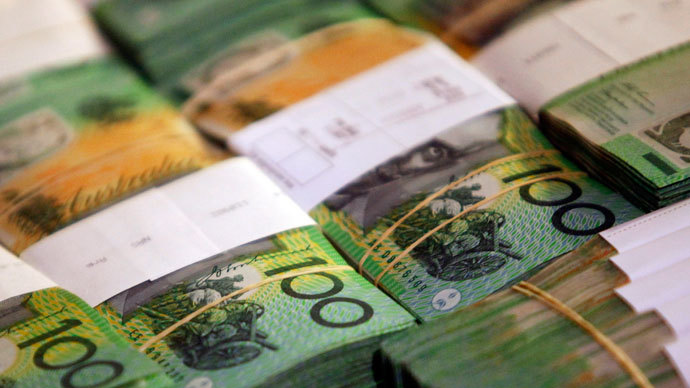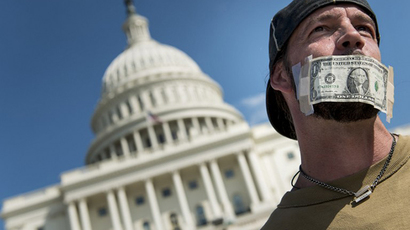Australia to ‘abolish phony debt ceiling’, continue spending-spree

Australia will dive further ‘Down Under’ into debt, as lawmakers reached a deal to do away with a limit. The government can now borrow as much as it wants, and will avoid a shutdown when it reaches the AU$300 billion debt limit on December 12.
Federal Treasurer Joe Hockey won over the Greens who had
previously supported the Labor Party cap of AU$400 billion (about
$373 billion). Earlier, the upper house blocked a motion to raise the debt ceiling to
AU$500 billion.
The government must justify any increase in debt up to AU$50
billion Greens leader Christina Milne told reporters in Canberra.
“This, I think, will return some maturity to the debate around
debt and get rid of what has become a phony debate every time the
government has wanted to raise the debt ceiling,” Milne said
Wednesday.
In return, Hockey promised the Greens that the budget will
include comprehensive debt figures on how much the government is
spending on climate change.
If lawmakers didn’t strike a deal by December 12, Australia’s
$1.5 trillion economy would have gone 'down under' with its
government forced into a shutdown.
Government programs will continue to run on borrowed money, a
strategy National Australia Bank chief executive Cameron Clyne
supports to spur growth. Australia has been hit hard by a waning
interest in mining investment, but has still held onto its AAA
credit rating, ideal circumstances for the government to issue
more bonds.
The ceiling was first introduced in 2008 under Kevin Rudd’s Labor
government, but has been widely criticized as debt nearly doubled
between 2008 and 2012 from 15 percent to 29.3 percent, relative
to GDP.
In the first nine months of 2013, Australia’s economy expanded
slower than forecast, growing only 0.6 percent from the first six
months. Growth in 2012 was 2.3 percent, below the anticipated 2.5
percent benchmark set out by economists.
The forecast is gloomy- unemployment isn’t expected to drop until
2015, a budget deficit over $30 billion is expected for the 2013
fiscal year, and free trade talks with neighbors are breaking
down over spy revelations.
After winning office on September 7, Prime Minister Tony Abbott
announced he wanted to expand Australia’s duty-free trade
relationship with China, Japan, India, Indonesia, and 8 other
countries by singing the Trans-Pacific Partnership.
‘A political weapon’
Christina Milne called the debt ceiling "little more than a
political weapon" which doesn’t actually limit government
spending.
The US established its debt ceiling before World War II to
protect from out-of-control spending, and more carefully evaluate
spending programs, but lawmakers continue to raise spending
powers by taking out more debt.
Well-known for the role it plays in US politics, the debt-ceiling
debate forced America to shut down in October, and could again in December.
The outstanding debt of the world’s largest economy is currently
$17 trillion, and is spread through domestic
and foreign debt.
A uniquely American chaos, the debt ceiling, a statutory limit,
tries to manage spending Congress has already approved, so when
congress failed to appropriate funds, the government is forced to
shut down.
Most countries don’t use a debt-ceiling to control borrowing;
instead lawmakers pass a budget they know the president will
sign.
The US Treasury overseas bond-buying, or borrowing, but in most
countries the authority lies solely with this institution, and
doesn’t need congressional approval to borrow more. That is why
most countries operate without a debt ceiling- Sweden, UK,
Canada, Germany, France, and Japan, for example.
European Union members peg their debt limit to a percentage of
GDP, instead of a fixed amount of money, like the US and
Australia. Countries strive to keep debt less than 60 percent of
GDP, but most of Europe is failing right now.
In the first half of 2013, government debt-to-GDP increased to
86.8 percent across the 28-member zone, according to Eurostat
data. Countries like Greece (169.1 percent) Italy (133.3 percent)
and Portugal (131.2 percent) have all overstepped their debt
boundaries.














